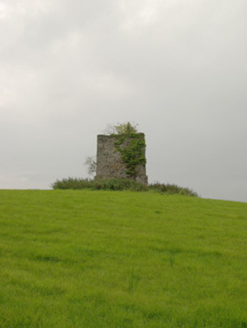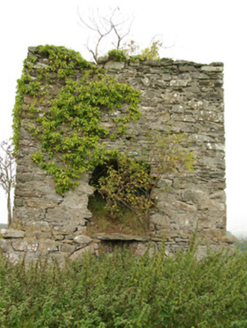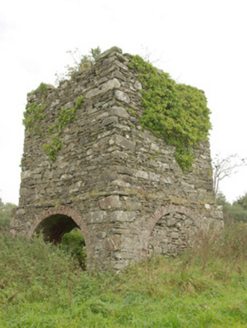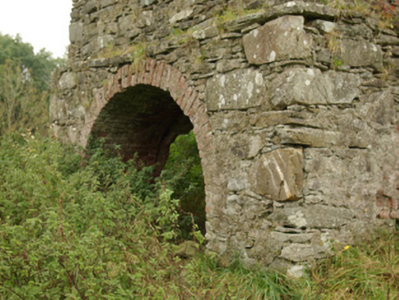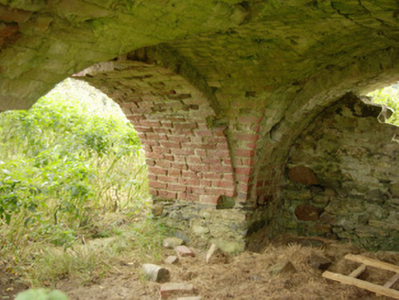Survey Data
Reg No
40907031
Rating
Regional
Categories of Special Interest
Architectural
Original Use
Folly
Date
1780 - 1820
Coordinates
222843, 399469
Date Recorded
02/10/2007
Date Updated
--/--/--
Description
Freestanding tapering two-stage tower\turret\folly (on square-plan), built c. 1780, having projecting base\first stage with open segmental-headed arches to three faces (arch to the east face now infilled with rubble stone masonry. Parapet now denuded. Randomly coursed rubble stone walls, remains of cut stone coping over projecting base stage. Square-headed opening to the north elevation having cut stone sill\threshold. Series of three segmental-headed arches at first stage level having brick reveals. Brick groin vaulted roof structure to interior at base\first stage level. Located on the summit of a small hillock to the south of Green Hills (see 40907022), and to the south-west of Raphoe. Remains of small-scale ornamental pond a short distance to the south-west at corner of field, now partially infilled, formerly with decorative tiled or mosaic flooring (no longer visible).
Appraisal
This conspicuous tower\turret\folly was originally associated with Green Hills (see 40907022 and 40907030) to the north, and is an interesting feature of some picturesque appeal in the rural landscape to the south-west of Raphoe. Although now partially denuded, it is well-built using local rubble stone masonry. Of particular note is the unusual series of segmental-headed arches to the base with a groin vaulted brick interior. It was probably originally built as an observation tower, ’eye-catcher or folly associated with Green Hills to the north, and although dilapidated it remains a feature of some aesthetic merit. It is likely that there was originally a viewing platform to the roof, now no longer visible. Eccentric structures such as this are a feature of many estate\demesne landscapes, with the majority dating to the second half of the eighteenth-century and the first decades of the nineteenth century. Occupying a conspicuous hilltop location, it forms part of a group of structures associated with Green Hills, and is an addition to the built heritage of the local area in its own right. The remains of a small-scale ornamental pond lie a short distance to the south-west, which according to local information had\has decorative tiled or mosaic flooring (no longer visible).
